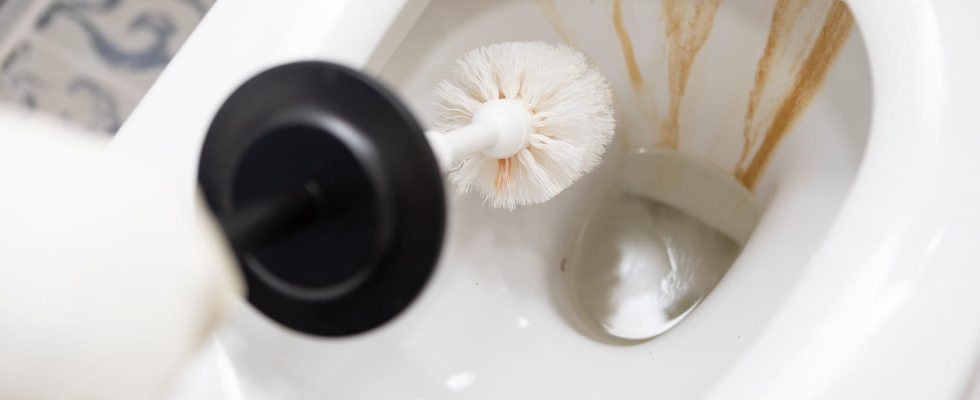In the quest for clean, limescale-free toilets, this product proves to be a powerful and effective ally, like white vinegar, but without leaving an unpleasant odor.
Limescale deposits in toilets may seem harmless at first, but they can quickly become truly unsightly, and a nightmare to remove. Formed by hard water, these deposits gradually develop, leaving unsightly marks on the bowl and often causing blockages in the pipes. In addition to the aesthetic appearance, limescale can also cause health problems by promoting the growth of harmful bacteria. Thus, finding an effective solution to get rid of it becomes a priority for many households.
In the fight against limescale, white vinegar is often considered a miracle cure, but many people cannot stand its strong smell. An equally effective alternative exists: citric acid. Although less known, this substance has undeniable advantages, particularly when it comes to dislodging the dreaded limescale that stubbornly builds up in our toilets. Its asset? It does not leave a bad, itchy smell like white vinegar, but a pleasant lemon smell.
Naturally present in many fruits such as citrus fruits, citric acid is a weak acid widely used in the food and cosmetic industries for its preservative and cleaning properties. Very effective, citric acid acts by dissolving limescale deposits thanks to its acidic nature. When mixed with water, it creates an acidic solution that effectively attacks the calcium ions present in limescale, breaking it down into smaller particles that can be easily wiped or rinsed away.
Its use is very simple and requires little effort. Here are the steps to follow:
- Prepare your citric acid solution by mixing an appropriate amount of citric acid powder with hot water in a bucket or container.
- Empty as much water as possible into the bottom of the toilet bowl.
- Pour the citric acid solution into the toilet bowl, making sure to completely cover the areas affected by limescale.
- Leave the solution on for at least 30 minutes, or longer for stubborn limescale deposits. If you can, leave it on overnight.
- Use a toilet brush to gently scrub the treated areas, making sure to reach every corner of the bowl.
- Flush the toilet to remove any remaining citric acid and limescale.
Unlike other harsh chemicals found commercially, citric acid is non-toxic, making it safe for use in home environments.
